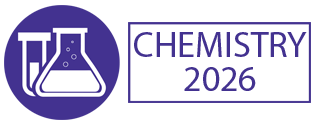Air Quality Analysis
Air quality analysis involves the systematic assessment of the composition and condition of the air in a specific area, typically to understand its health and environmental impacts. This process employs various methods and technologies to measure the concentration of pollutants and other relevant parameters in the atmosphere. Key components of air quality analysis include monitoring pollutant levels, identifying sources of contamination, assessing health risks, and implementing measures for pollution control and mitigation. Data collected from monitoring stations, satellite observations, and computational models are analyzed to evaluate air quality trends and variations over time and space. Common pollutants of concern include particulate matter (PM), nitrogen dioxide (NO2), sulfur dioxide (SO2), carbon monoxide (CO), ozone (O3), and volatile organic compounds (VOCs). Air quality analysis plays a crucial role in informing public health policies, guiding urban planning decisions, and addressing environmental concerns such as climate change and ecosystem degradation. It helps governments, organizations, and communities to understand the magnitude of air pollution problems, prioritize interventions, and track the effectiveness of regulatory measures. Techniques such as air quality indices (AQI) are used to communicate the health implications of pollution levels to the general public in a simple and understandable manner. Advanced analytical tools like dispersion modeling and remote sensing enable detailed assessments of air quality dynamics at regional and global scales. Interdisciplinary approaches integrating atmospheric science, environmental engineering, epidemiology, and public health are employed to comprehensively evaluate the complex interactions between pollutants, meteorological conditions, and human activities. Real-time monitoring systems and sensor networks provide timely data for decision-making and emergency response during pollution events or environmental disasters. Collaboration between government agencies, research institutions, industry stakeholders, and community organizations is essential for effective air quality management and policy development.

Hossam A Gabbar
Ontario Tech University, Canada
Victor John Law
University College Dublin, Ireland
Alexander Bagaturyants
National Research Nuclear University MEPhI, Russian Federation
Sergey Suchkov
N.D. Zelinskii Institute for Organic Chemistry of the Russian Academy of Sciences, Russian Federation
Shree Niwas Chaturvedi
Centre for Aptitude Analysis and Talent Search, India
Pieter Samyn
SIRRIS, Belgium




Title : Advances in plasma-based radioactive waste treatment
Hossam A Gabbar, Ontario Tech University, Canada
Title : Unraveling the ultrastructure and functions of the neuronal membrane skeleton using super-resolution fluorescence microscopy
Zhou Ruobo, Djillali Liabes University of Sidi Bel Abbes, Algeria
Title : Solar box cooker dehydration, and relative humidity endpoint detection, of lamiaceae culinary leaves on the island of Crete
Victor John Law, University College Dublin, Ireland
Title : Nutrient and heavy metal loads from the Ribeiras to Coastal zones: A land-ocean continuum perspective in Madeira Island
Aracelis Del Carmen Narayan Rajnauth, University of Porto, Portugal
Title : Prospective polyoxometalate-based covalent organic framework heterogeneous catalysts
Arash Ebrahimi, Comenius University Bratislava, Slovenia
Title : Eliminating implant failure in humans with nano chemistry: 30,000 cases and counting
Thomas J Webster, Brown University, United States